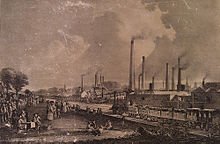When did Environmental Issues Start
When did the U.S. environmental movement begin? It's hard to say for sure. Nobody held an organizing meeting and drew up a charter, so there is no absolute definitive answer to the question of when the environmental movement really began in the United States. Here are some important dates, in reverse chronological order:
Earth Day?
April 22, 1970, the date of the first Earth Day celebration in the United States, is often cited as the start of the modern environmental movement.
On that day, 20 million Americans filled parks and took to the streets in a nationwide teach-in and protest about critical environmental issues facing the United States and the world. It is probably around that time that environmental issues also truly became political issues.
Silent Spring
Many other people associate the beginning of the environmental movement with the 1962 publication of Rachel Carson's groundbreaking book, Silent Spring, which spelled out the dangers of the pesticide DDT. The book awakened many people in the United States and elsewhere to the potential environmental and health hazards of using powerful chemicals in agriculture and led to a ban on DDT. Up until that point we understood that our activities could be harmful to the environment, but Rachel Carson's work suddenly made it clear to many of us that we were also harming our bodies in the process.
Earlier, Olaus and Margeret Murie were early pioneers of conservation, using the burgeoning science of ecology to encourage the protection of public lands where functioning ecosystems could be preserved.
Aldo Leopold, a forester who later laid the foundations of wildlife management, continued focusing ecological science on the quest for a more harmonious relationship with nature.
A First Environmental Crisis
An important environmental concept, the idea that active engagement by people is necessary to protect the environment, probably first reached the general public at the very beginning of the 20th century.
During the period 1900-1910, wildlife populations in North America were at an all time low. Populations of beaver, white-tailed deer, Canada geese, wild turkey, and many duck species were almost extinct from market hunting and loss of habitat. These declines were obvious to the public, which largely lived in rural areas at the time. As a result, new conservation laws were enacted (for example, the Lacey Act), and the very first National Wildlife Refuge was created.
Still others might point to May 28, 1892 as the day when the U.S. environmental movement began. That is the date of the first meeting of the Sierra Club, which was founded by noted preservationist John Muir and is generally acknowledged as the first environmental group in the United States. Muir and other early members of the Sierra Club were largely responsible for preserving the Yosemite Valley in California and persuading the federal government to establish Yosemite National Park.
No matter what first sparked the U.S. environmental movement or when it actually began, it's safe to say that environmentalism has become a powerful force in American culture and politics. Ongoing efforts to understand more clearly how we can use natural resources without depleting them, and enjoy natural beauty without destroying it, is inspiring many of us to take a more sustainable approach to the way we live and to tread a little more lightly on the planet.










